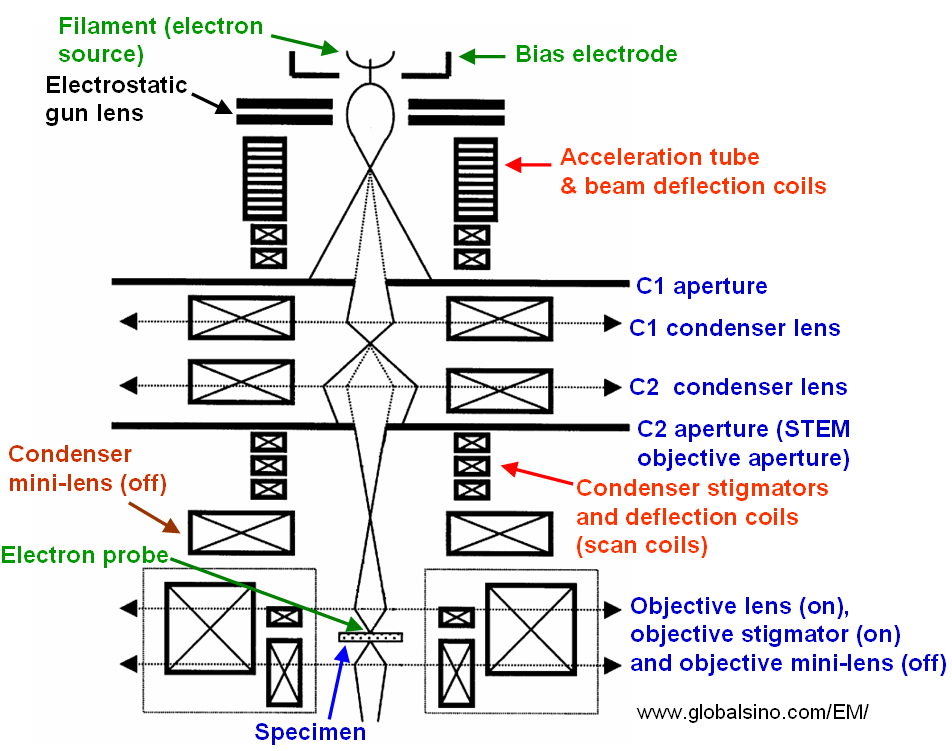=================================================================================
In EMs, the condenser aperture is used to exclude electrons emitted at high angles from the electron gun, which will decrease the brightness but improve the quality of the illumination because these peripheral electrons are less coherent, especially in LaB6 and W (tungsten) guns.
For an ideal objective lens, the incident electron probe simply forms an Airy disc in the back focal plane of the lens. This disc is the Fourier transform of the uniformly illuminated condenser aperture.
Figure 3742 shows the structure of the electron probe-forming system in STEM mode in JEOL JEM-2010F TEMs. The beam current decreases due to the probe-forming aperture.

Figure 3742. Schematic illustration of the probe-forming electron optics in STEM mode in JEOL JEM-2010F TEMs.
A field emission gun (FEG) is needed for electron holography since the spatial coherence with a conventional electron gun extremely limits the resolution. Note that even though for a TEM with a conventional electron gun, a smaller illumination aperture can be used to increase the degree of coherence, the smaller aperture still cannot practically be used for holography measurement because of the smaller coherent beam current Icoh.
Note that from the EM operation point of view, the probe size, d, can only be reduced by using a smaller condenser aperture or by increasing the excitation of C1 lens.
Furthermore, in modern TEM systems, to minimize the spurious X-rays, one needs to use an extra-thick, 'top hat' C2 aperture.
|
